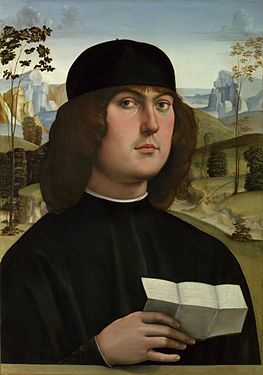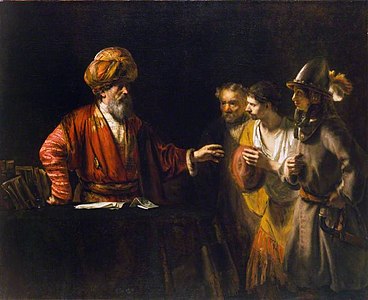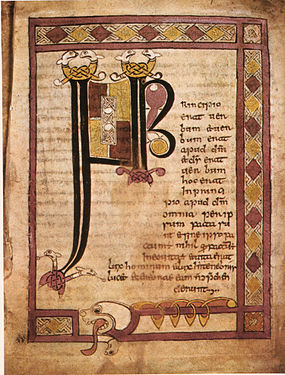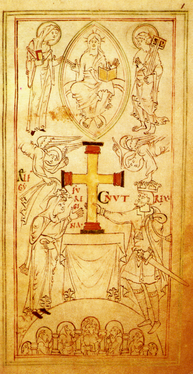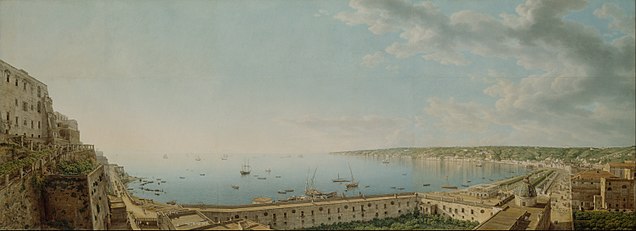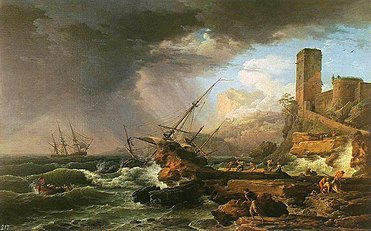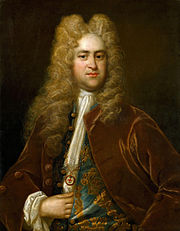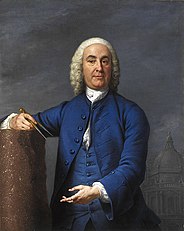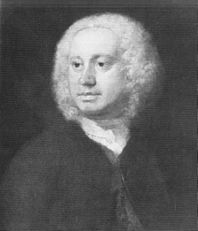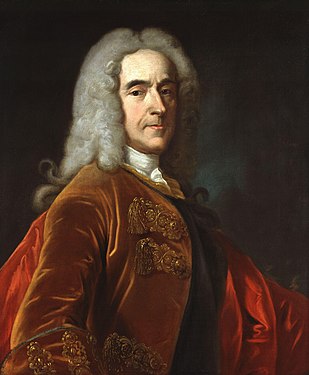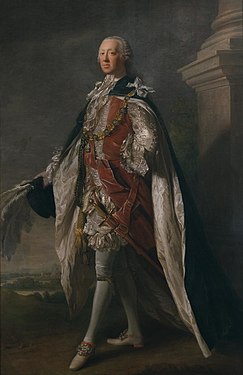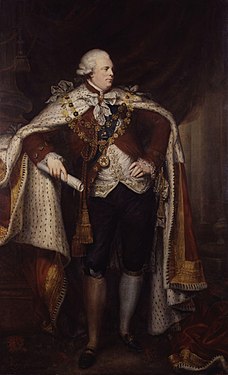Stowe House
| Stowe House | |
|---|---|
Palladian, Neoclassical | |
| Town or city | Buckingham, Buckinghamshire |
| Country | United Kingdom |
| Coordinates | 52°01′55″N 1°01′03″W / 52.031963°N 1.017560°W |
| Construction started | 1677–1683 1720–1733 1740–1760 1770–1779 |
| Design and construction | |
| Architect(s) | John Vanbrugh James Gibbs William Kent Giacomo Leoni Giovanni Battista Borra Robert Adam Vincenzo Valdrè John Soane Edward Blore |
Listed Building – Grade I | |
| Official name | Stowe: The Mansion with Attached Service Ranges |
| Designated | 25 September 1951 |
| Reference no. | 1289788[1] |
National Register of Historic Parks and Gardens | |
| Designated | 30 August 1987 |
| Reference no. | 1000198[2] |
Stowe House is a grade I
and is owned by the Stowe House Preservation Trust. Over the years, it has been restored and maintained as one of the finest country houses in the UK. Stowe House is regularly open to the public.The gardens (known as
History



The medieval settlement of Stowe clustered around the parish church of St Mary's, Stowe.
Sir
House
Architectural history
The house is the result of four main periods of development.[8] Between 1677 and 1683, the architect William Cleare was commissioned by Sir Richard Temple to build the central block of the house.[9] This building was four floors high, including the basement and attics and thirteen bays in length. Cleare had worked as Christopher Wren's chief joiner and based the design of the house on that of Coleshill.[10]
From the 1720s to 1733, under Viscount Cobham, additions to the house included the Ionic North tetrastyle Portico by Vanburgh, as well as the re-building of the north, east and west fronts. After Vanburgh's death in 1726, work continued under William Kent, and it was probably he who designed the now-demolished two-tier south portico, which consisted of four Tuscan columns with four Ionic or Composite columns above.
From the 1740s to 1760, under Viscount Cobham, the western and the eastern state apartments were expanded.
From 1770 to 1779, Earl Temple obtained a first design from Jacques-François Blondel for the new south front of the house. However this design did not meet with the Earl's approval, in 1771 Robert Adam produced a new design for the south front; this design was adapted and made more uniform by Thomas Pitt assisted by Giovanni Battista Borra and was finished in 1779. The interiors of the new state apartments were not completed until 1788, much of the interior work being by an Italian, Vincenzo Valdrè (1740–1814).
At the same time, the final remodelling of the North Front was taking place: this involved the erection in 1770–1772 of the two twin quadrant colonnades of Ionic columns that flank the facade. These may be to Robert Adam's design. The northern ends of the colonnades are linked to screen-walls containing gateways by William Kent which were moved from the forecourt to this position and heightened in 1775 by Vincenzo Valdrè. The east gateway leads to the stable court the west to the kitchen court. At right angles to these walls stand the arches designed by Giacomo Leoni c. 1740; these were formal entrances to the gardens, they now lead to various buildings put up by the school.
The exterior of the house has not been significantly changed since 1779, although in the first decade of the 19th century, the Egyptian Hall was added beneath the North Portico as a secondary entrance.


The south facade



The showpiece of the House is the south facade overlooking the gardens. This is one of the finest examples of
There is a flight of thirty-three steps the full width of the portico which descends to the South Lawn. The staircase has solid
The ground floor is lower than the floor above, about 15 feet (4.6 m) in height and visually acts as a base to the facade, it is of banded rustication with simple arched windows beneath each window on the upper floor. In 1790 a balustrade was added parallel to the façade that ran from the bottom of the steps the full length of the house and then returned at both ends, there are a series of 30 pedestals along the balustrade, that until their sale in 1921 were topped by bronze urns. These were replaced by replicas in 2013. This was probably added to keep visitors from the lower windows of the house, and formal flower beds were laid out in the area.
Stowe Library
In 1793
In 1834, Richard, 1st Duke of Buckingham and Chandos, inherited the library of Lord Grenville, his uncle, of which in 1824 The Times had claimed
- in history, philosophy, political economy, mathematics, diplomatic state papers, both printed and manuscript, is the most perfect collection in this country.[11]
Following the bankruptcy of the
The major interiors
Several owners of Stowe undertook the Grand Tour, Earl Temple spent 1729–1733 in France, Switzerland & Italy, the 1st Marquess in 1774 visited Italy, the 2nd Duke before he inherited his title in 1817, and the 1st Duke in 1827–1829 toured the Mediterranean aboard his yacht the Anna Eliza named after his wife. Many of the art works that adorned the house were acquired both during these trips and through the 1st Duke inheriting his father-in-law's art collection. The 1st Duke, before he inherited Stowe, also bought paintings at the sale of the Orleans Collection in 1798 and continued to buy paintings for another twenty years as well as books, engravings and the Stowe Service of Worcester Porcelain, as well as archaeological specimens. The main rooms are mainly located on the 1st floor (referred to in the US as the 2nd floor) Piano nobile, a few are on the ground floor (referred to in the US as the 1st floor).
During the sales of 1921 and 1922, all the remaining furnishings and art works not sold in 1848 were auctioned, as were several fittings, including chimneypieces. Some of the family portraits and other items associated with the house have since been bought back and are now on display in the house.




The North Hall

located behind the north portico this is the main

The Marble Saloon
This is the grandest interior in the House, located immediately behind the south portico. It is based on the



The State Music Room
The State Music Room, to the east of The Marble Saloon, is approximately 30 by 40 feet (12 m), probably designed by Valdrè and finished in the early 1780s. With an

The Large Library
The Large Library is one of the three

The State Drawing Room
Also called The Temple Room, the State Drawing Room is to the west of The Marble Saloon and measures approximately 30 by 40 feet (12 m), with an

The State Dining Room
The State Dining Room measures 75 by 25 feet (22.9 by 7.6 m). Located to the west of The State Drawing Room, created in the 1740s the probable architect being either
The Small Tapestry Dining Room
Also known as The Snug, the Small Tapestry Dining Room is located to the west of The State Dining Room, originally dating from the late 1750s, but having undergone drastic reconstruction little of the original decoration survives. Only the gilt cornice and plaster frieze, and the frames that enclosed the tapestries are still in place. The elaborate marble chimneypiece and its carved-wooden overmantel, which contained an oval portrait of Lord Cobham dressed in armour by Sir Godfrey Kneller, were sold in 1922. The four tapestries sold in 1921 were from Brussels and depicted the Arts of War and were designed by Lambert de Hondt the Younger. The largest tapestry depicted the Battle of Wijnendale and included a depiction of Lord Cobham who was one of Marlborough's generals at the battle. The ceiling was destroyed in 1935 when the western pavilion of the south front was reconstructed due to structural problems.[19]
The Garter Room
Also known as "The Servery", the Garter Room, which served as the State Bedroom, is to the west of The Small Tapestry Dining Room. Designed by Borra in 1755 and completed over the next five years. None of the original decoration survived the reconstruction of the west pavilion in 1935. There is a reconstruction of the original plaster ceiling with its
-
The Marquess of Granby, Joshua Reynolds, now in the National Army Museum
-
William Shakespeare, the Chandos portrait. now in the National Portrait Gallery, London, London
-
Bartolomeo Bianchini,Francesco Raibolini, now in the National Gallery


The Blue Room
The Blue Room is to the east of the Large Library, used as a small drawing room. Until the 1849 sale this was known as the Print Room and the walls were lined with bookshelves similar to those in the Large Library. These housed the extensive

The Breakfast Parlour
Now called the Chandos Sigma Dormitory. It is immediately to the east of the Blue Room dating from 1773 to 1775. This is a relatively plain room. The ceiling is coved, centre of the ceiling is decorated with a circular painting of Venus blindfolding Cupid surrounded by plaster decoration that includes incense burners. The marble fireplace dated 1774 with its relief of Venus and Cupid was sold in 1922. There used to be 39 paintings in this room, including Virgin and Child with SS John the Baptist and Catherine, dated 1504 by Andrea Previtali this is now in the National Gallery, London and Woman at her Toilette once attributed to Leonardo da Vinci and bought as such in 1780, now School of Fontainebleau, this is in the Worcester Art Museum, Massachusetts.[22]
The Rembrandt Room
Now called the Chandos Delta Dormitory. Immediately to the east of the Breakfast Parlour, originally dated 1748, the room was extended and redecorated in 1775. In a relatively plain room, the painting that used to be in the centre of the ceiling, Venus at her toilet by Vincenzo Valdrè was sold in 1922 along with the marble chimneypiece with its central relief of
-
Rembrandt van Rijn, Self portrait, now in the Isabella Stewart Gardner Museum
-
Rembrandt van Rijn, The Centurion Cornelius, now in the Wallace Collection
-
School of Rembrandt, Eleazar Swalmius, now in the Royal Museum of Fine Arts Antwerp
-
Govaert Flinck, A Young Archer, now in the Wallace Collection
-
Rembrandt's Bellona now in the Metropolitan Museum of Art
The Chapel
Located immediately behind the Eastern Pavilion, the Chapel was created in 1742–1748 and originally rose through two floors. The room was divided into two floors in 1929 when the new school chapel was built, all the timber panelling being reused in the new chapel. Only the plaster ceiling decoration survives, this consists of octagons, crosses and hexagons. The elaborate
The Gothic Library
Situated on the ground floor beneath the centre part of the Large Library, this room was created in 1805. It was the last major interior to be added to the house and was designed by Sir John Soane. The plaster ceiling pattern is based on a very shallow
-
Initial Page from Stowe Missal, now in the Royal Irish Academy, Dublin
-
King Canute & Queen Ælfgifu from Stowe Ms 944, folio 6, now in the British Library
-
Anne de Foix, from Stowe Ms 584, folio 71v, now in the British Library
-
Henry of Grosmont, first duke of Lancaster, from the Bruges Garter Book, Stowe Ms 594, folio 8, now in the British Library


The Egyptian Hall
Created c.1803, the Egyptian Hall is situated beneath the North Hall to which it is connected by the staircase by the east wall which was inserted at this time, and was created as the winter entrance, linked to the

The East Corridor and Grand staircase
Dating from the 1730s, connects the North Hall via the south-east door with the Ante-Library, this is a relatively plain room, the stone staircase at the east end of the corridor is
The Ante-Library
Located immediately to the north of the Large Library, created in 1805, this is really a wide corridor, about 50 feet (15 m) long, and low in height, with a plain ceiling and walls, the fireplace on the east wall is a replacement for the carved marble one sold in 1922. The main feature of the room are the eight Tuscan columns of scagliola imitating Verd antique marble, the work of Domenico Bartoli. The room housed in 1838 a series of 52 family portraits, including: The Rt Hon. George Greville prime minister, by Sir Joshua Reynolds, now in the Bass Museum; a posthumous portrait of George, Marquess of Buckingham, by John Jackson now at Christ Church, Oxford; Mary Nugent, Marchioness of Buckingham by Sir Joshua Reynolds, last sold in 1989 and present whereabouts unknown; William Wyndham, Lord Grenville by John Hoppner now in the North Carolina Museum of Art.[28]
The Stucco Corridor and West staircase
Reached from the south-west door in the North Hall via the Stucco Corridor with its plaster barrel vaulted coffered ceiling is the cantilevered stone West staircase with iron balustrade, dating from the 1730s, James Gibbs is thought to be the designer.[29]
Other Interiors
There are various smaller rooms on the main floor of the house, mainly plain in decoration but used to house many important paintings, including: two paintings of 1648 by
-
Aert de Gelder’s The Temple Entrance, now in the Mauritshuis
-
Giovanni Battista Lusieri’s A View of Naples,
now in the J. Paul Getty Museum -
Claude Joseph Vernet’s Rocky Coast in a Storm, now in the Wallace Collection
-
Orazio Gentileschi’s Rest on the Flight into Egypt, now in the
J. Paul Getty Museum -
Frans Hals’ "Portrait of a Woman", now in the Boston Museum of Fine Arts
-
Jan Brueghel the Elder’s River landscape, now in the National Gallery of Art
-
Carlo Dolci’s Mater Dolorosa, now in the National Museum of Western Art
-
Jacob van Ruisdael’s A wooded river landscape with a family at rest on a track, now in a private collection
Other areas of the house
The house contains over 400 rooms. The ground floor rooms to the east of the Gothic Library were used by the family as personal rooms including the
Gallery of architects, garden designers and artists who worked at Stowe
-
Sir John Vanbrugh, 1664-1726 (architect, worked at Stowe c.1720 to 1726)
-
James Gibbs, 1682-1754 (architect, worked at Stowe 1726 to 1749)
-
William Kent, 1685-1748 (architect, painter and garden designer, worked at Stowe 1731 to 1748)
-
Charles Bridgeman, 1690-1738, (garden designer, worked at Stowe 1711 to 1733)
-
Peter Scheemakers, 1691-1781 (sculptor, carved the statues in the Temple of Ancient Virtue, The pediment on the Temple of Concord & Victory and eight of the British Worthies)
-
John Michael Rysbrack, 1694-1770, (sculptor, carved the Saxon deities and eight of the British Worthies)
-
Lancelot 'Capability' Brown, 1716-1783 (garden designer, worked at Stowe 1741 to 1751)
-
Robert Adam, 1728-1792 (architect, worked at Stowe 1770 to 1771 Adam's design for the south front was modified in execution by Thomas Pitt and completed in 1779)
-
Sir John Soane, 1753-1837 (architect, worked at Stowe 1805 to 1807)
Gardens and park
Described by historian Christopher Hussey as the "outstanding monument to English landscape gardening",[30] the gardens and parkland of Stowe are Grade I listed.[31] The gardens were developed by several generations of the Temple and Grenville families.[30] From the 1710s to the 1740s, leading garden designers were employed by Richard Temple, 1st Viscount Cobham, these included Charles Bridgeman, James Gibbs, William Kent and Capability Brown, as well as architect Sir John Vanburgh. After Viscount Cobham's death, his nephew Richard Grenville-Temple, 2nd Earl Temple, inherited and he began a programme of naturalisation in the parkland, altering the formation of lakes and woodland, as well as moving monuments to new locations.[9]
The park and gardens saw 213,721 visitors during 2020/21.[32]
The Temple-Grenville family
John Temple was the first member of the family to serve as
When the War of the Spanish Succession broke out in 1702 the 4th Baronet was appointed a colonel by William III, he was later promoted to lieutenant general. First created Baron Cobham in 1714 by King George I, then in 1718 Viscount Cobham by the same king. In 1715 he married Anne Halsey an heiress of a rich London brewer. She brought a dowry of £20,000 (equivalent to £3,330,000 as of 2021).[33][34] He was a member of the Kit-Cat Club where he probably first met fellow members John Vanbrugh and Joseph Addison whose writings on garden design influenced the development of the gardens at Stowe. Cobham was the centre of the Whig party grouping of Cobhamites. His sister Hester was created Countess of Temple in her own right in 1749 by King George II, from which her son, heir to the estate inherited his title as 2nd Earl Temple.[citation needed]
Richard Grenville the future 2nd Earl Temple, married Anna Chamber in 1737, an heiress with a £50,000 fortune.[35] He was leader of the Whig group known as the Grenvillites. King George II made Earl Temple a Knight of the Garter in 1760. Earl Temple was an active supporter of John Wilkes. When the Earl's cousin George Dodington, 1st Baron Melcombe died in 1762 he left his Vanbrugh designed house Eastbury Park and estates in Dorset to Earl Temple. He attempted to sell the house, but as no buyer could be found, he demolished most of the building using the marble from the house in the Marble Saloon at Stowe. The Eastbury estate was finally sold in 1806.[citation needed]
The 2nd Earl Temple's sister
George Nugent-Temple-Grenville undertook the grand tour in 1774. In 1775 he married a

The 2nd Marquess of Buckingham married in 1796
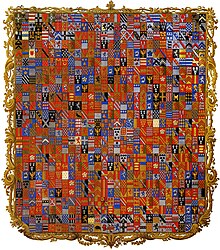
The 2nd Duke through his mother Anna was descended from the
Richard Plantagenet Campbell Temple-Nugent-Brydges-Chandos-Grenville, 3rd Duke of Buckingham and Chandos (10 September 1823 – 26 March 1889), usually shortened to Richard Temple-Grenville, was a British statesman of the 19th century, and a close friend and subordinate of Benjamin Disraeli. He was styled Marquess of Chandos until the death of his father in 1861.[citation needed]
With the death of the third Duke of Buckingham and Chandos in 1889, there remained no heirs-male to the dukedom, so it became extinct. After which ownership of the estate was separated from the title Earls Temple of Stowe which passed by special remainder in the letters patent, creating it through the female line to a nephew of the 3rd Duke William Temple-Gore-Langton, the son of Lady Anna Eliza Mary Grenville sister of the 3rd Duke. The fall of the family engendered Lord Rosebery's comment "The glories of the House, built up with so much care and persistence, vanished like a snow wreath".[citation needed]
After the death of her father the 3rd Duke, Lady Mary Morgan-Grenville tried to sell house and estate for £200,000, but nobody wished to buy it. It was then rented until 1894 after which the house remained unoccupied until 1901 when Lady Mary returned as a widow, her husband Major Luis Morgan-Grenville having died in 1896 and she lived in the house until 1908 when she passed it onto her unmarried son as he came of age at 21.[citation needed]
The last inheritor of the estate, Rev. Luis C.F.T. Morgan-Grenville, due to prodigious debts, sold the house, gardens and part of the park in 1921 to a Mr Harry Shaw for £50,000
Line of inheritance
The propensity to marry heiresses is shown by the family name being changed to Temple-Nugent-Brydges-Chandos-Grenville by the late 18th century. The following family members were the owners of the estate and creators of the house and gardens as they now exist:
- Peter Temple, ?-1578: leased the estate in 1571.
- John Temple, 1542–1603: first inherits the lease from his father Peter then purchased the estate in 1589.
- Sir Thomas Temple, 1567 – c. 1637: 1st Baronet, he inherited from his father John.
- Sir Peter Temple, 1592–1653: 2nd Baronet, he was given the estate by his father the 1st Baronet in 1630. He kept the house but became a bankrupt.
- Sir Richard Temple, 1634–1697: 3rd Baronet, he inherited the estate from his father, the 2nd Baronet.
- Richard Temple, 1st Viscount Cobham, 1675–1749: 4th Baronet, later Baron Cobham and finally Viscount Cobham, he inherited from his father, the 3rd Baronet.
- Richard Grenville-Temple, 1711–1779: 2nd Earl Temple, he inherited from his uncle, Viscount Cobham.
- George Nugent-Temple-Grenville, 1753–1813: 1st Marquess of Buckingham, he inherited from his uncle, the 2nd Earl Temple.
- Richard Temple-Nugent-Brydges-Chandos-Grenville, 1776–1839: 2nd Marquess of Buckingham later 1st Duke of Buckingham & Chandos, he inherited from his father, the 1st Marquess of Buckingham.
- Richard Plantagenet Temple-Nugent-Brydges-Chandos-Grenville, 1797–1861: 2nd Duke of Buckingham & Chandos, he inherited from his father, the 1st Duke.
- Richard Plantagenet Campbell Temple-Nugent-Brydges-Chandos-Grenville, 1823–1889: 3rd Duke of Buckingham & Chandos, he inherited from his father, the 2nd Duke.
- Lady Mary Morgan-Grenville, 1852–1944: 11th Lady Kinloss, she inherited from her father, the 3rd Duke.
- Richard G. Morgan-Grenville, 1887–1914: was given the estate in 1908 by his mother Lady Kinloss. He was killed fighting in the Great War, at Ploegsteert Wood.
- Reverend Luis C.F.T. Morgan-Grenville, 1889–1944: inherited the estate on the death of his brother Richard, and sold it in 1921.
Gallery of the main creators of Stowe
-
Viscount Cobham, owned Stowe 1697-1749
-
2nd Earl Temple, owned Stowe 1749-1779
-
1st Marquess of Buckingham, owned Stowe 1779-1813
The restoration of the house and gardens
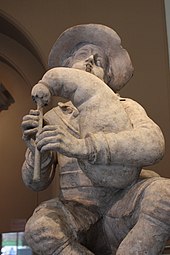


Since the 1848 sale, the maintenance of the house and gardens was neglected. Although Stowe's future was given reprieve in 1923, when it was repurposed as a school, they were unable to maintain the gardens and park.[40] Though the school tried its best it was obvious by the 1980s that a major restoration was needed. In 1990, the National Trust became responsible for the gardens.[40]
On taking over ownership of the gardens the National Trust commissioned a survey on which to base a restoration strategy. Individual trees, boundaries, buildings, lakes, paths and fences were mapped. The first principle was to keep all buildings and planted features that were in existence by the time the last plan of the garden in 1843 was created. Another was to restore the main views and axes of the garden. The process was greatly helped by the Stowe Papers, some 350,000 documents that are now in the collection of the Huntington Library in California, containing extensive and detailed information on the creation of both the house and gardens.[41]

The first large-scale operation was to dredge the lakes and other water features. 320,000 tonnes of silt had to be removed. The wall of the ha-ha had largely collapsed and had to be rebuilt by hand. It was also found that very few trees survived before the 3rd Duke's time; he had all the mature trees felled to sell for their timber in order to raise cash. There had been a few plantings of commercial softwood, including a spruce plantation on the site of the Saxon Deities (largely by John Michael Rysbrack placed 1728–1730). These were felled. Further thinning was carried out, including reopening views between the various buildings and monuments. Replanting of 20,000 trees and shrubs followed, using species present in the original garden. Paths which had become overgrown were re-excavated and eventually covered in gravel from local pits.
Over 100 pieces of statuary had been sold from the gardens in 1848, 1921 and 1922, so it was decided to replace them gradually with replicas as and when funds could be raised. In 1989–90
In 2002 the
The phases are: Phase 1, the
Listed status
Stowe has one of the largest concentrations of Grade I
Grade I listed buildings at Stowe House
|
|---|
|
Notable visitors
British and foreign aristocrats and royalty frequently stayed at the house throughout the 18th and 19th centuries. In 1725
The 1760s saw two visits by
1810 saw the visit of
In 1843 there were several visits by German royalty, with the British-born

Famous non-royal visitors included:
In April 1786 John Adams (the future second President of the United States on tour with Thomas Jefferson – who would serve as his vice president before becoming President himself) visited Stowe and other notable houses in the area, after visiting them he wrote in his diary "Stowe, Hagley, and Blenheim, are superb; Woburn, Caversham, and the Leasowes are beautiful. Wotton is both great and elegant, though neglected".[44] However, in his diary he was also damning about the means used to finance the large estates, and he did not think that the embellishments to the landscape, made by the owners of the great country houses, would suit the more rugged American countryside.[44] The English composer William Crotch visited in 1805, as did Charles James Fox in the party that included the Prince Regent.
The house and grounds appear extensively in the music video for the 1981 song "Souvenir" by English electronic band Orchestral Manoeuvres in the Dark.[45]
Stowe on film
This section needs additional citations for verification. (June 2020) |
Stowe and its gardens have often been used as a location for films, music videos and television including: "
Notes
- ^ Historic England. "STOWE SCHOOL – The Mansion with attached service ranges (now Nugent House, Cobham House and Grafton House) (formerly listed as Stowe House) (Grade I) (1311507)". National Heritage List for England. Retrieved 12 April 2019.
- ^ Historic England. "Stowe (Grade I) (1000198)". National Heritage List for England. Retrieved 12 April 2019.
- ^ "The History and Archaeology of Stowe Parish". www.le.ac.uk. Retrieved 14 July 2022.
- ^ "Why were some medieval villages deserted?". National Trust. Retrieved 14 July 2022.
- ^ "Stowe Parish Church | HISTORY". stowechurch.org.uk. Retrieved 21 June 2022.
- ^ Page, William. "Stowe". A History of the County of Buckingham, Volume 4. pp. 229–237. Archived from the original on 8 November 2014. Retrieved 21 June 2022.
- JSTOR 3815836.
- ^ pages 11–13, Stowe House, Michael Bevington, 2002, Paul Holberton Publishing
- ^ a b "History of Stowe". National Trust. Retrieved 14 July 2022.
- ISBN 978-0-540-01217-6.
- ^ The Times, "The health of the Duke of Wellington", 26 April 1824
- ^ The Morning Post, "SALE OF THE STOWE LIBRARY", 20 January 1849
- ^ pages 39–42, Stowe House, Michael Bevington, 2002, Paul Holberton Publishing
- ^ pages 36–38, Stowe House, Michael Bevington, 2002, Paul Holberton Publishing
- ^ pages 51–55, Stowe House, Michael Bevington, 2002, Paul Holberton Publishing
- ^ pages 48–51, Stowe House, Michael Bevington, 2002, Paul Holberton Publishing
- ^ pages 54–57, Stowe House, Michael Bevington, 2002, Paul Holberton Publishing
- ^ pages 57–59, Stowe House, Michael Bevington, 2002, Paul Holberton Publishing
- ^ pages 60–61, Stowe House, Michael Bevington, 2002, Paul Holberton Publishing
- ^ pages 62–65, Stowe House, Michael Bevington, 2002, Paul Holberton Publishing
- ^ pages 45–48, Stowe House, Michael Bevington, 2002, Paul Holberton Publishing
- ^ pages 31–33, Stowe House, Michael Bevington, 2002, Paul Holberton Publishing
- ^ pages 33–34, Stowe House, Michael Bevington, 2002, Paul Holberton Publishing
- ^ pages 67–68, Stowe House, Michael Bevington, 2002, Paul Holberton Publishing
- ^ pages 78–80, Stowe House, Michael Bevington, 2002, Paul Holberton Publishing
- ^ pages 75–76, Stowe House, Michael Bevington, 2002, Paul Holberton Publishing
- ^ pages 42–43, Stowe House, Michael Bevington, 2002, Paul Holberton Publishing
- ^ pages 43–45, Stowe House, Michael Bevington, 2002, Paul Holberton Publishing
- ^ page 39, Stowe House, Michael Bevington, 2002, Paul Holberton Publishing
- ^ JSTOR 3817691.
- ^ a b Historic England, "Stowe (1000198)", National Heritage List for England, retrieved 5 February 2016
- ^ "National Trust Annual Report 2020/21" (PDF). National Trust. 2021. Archived from the original (PDF) on 8 January 2022. Retrieved 14 July 2022.
- ^ UK Retail Price Index inflation figures are based on data from Clark, Gregory (2017). "The Annual RPI and Average Earnings for Britain, 1209 to Present (New Series)". MeasuringWorth. Retrieved 11 June 2022.
- ^ page 60, Stowe Landscape Gardens, James Shurmer, 1997 National Trust
- ^ a b page 68, Stowe Landscape Gardens, James Shurmer, 1997 National Trust
- required.)
- ^ page 81, Stowe Landscape Gardens, James Shurmer, 1997 National Trust
- ^ London's Mansions The Palatial Houses of the Nobility, p144, by David Pearce, Batsford 1986
- ^ a b page 82, Stowe Landscape Gardens, James Shurmer, 1997 National Trust
- ^ )
- ^ "Stowe papers, 1175-1919 (Bulk 1600-1900)".
- ^ "English Heritage Images of England: a searchable photographic archive of the historic buildings of England". www.imagesofengland.org.uk. Archived from the original on 28 October 2005.
- ^ page 134, Temples of Delight: Stowe Landscape Gardens by John Martin Robinson, 1999, George Philip Publishers
- ^ a b Adams & Adams 1851, p. 394.
- ^ "Orchestral Manoeuvres In The Dark - Souvenir - YouTube". www.youtube.com. Archived from the original on 29 November 2020. Retrieved 6 January 2021.
- ^ "Orchestral Manoeuvres In The Dark - Souvenir - YouTube". www.youtube.com. Archived from the original on 21 December 2021.
References
- Adams, John; Adams, Charles Francis (1851). The Works of John Adams, Second President of the United States: Autobiography, continued. Diary. Essays and controversial papers of the Revolution. The Works of John Adams, Second President of the United States. Vol. 3. Little, Brown. p. 394.



